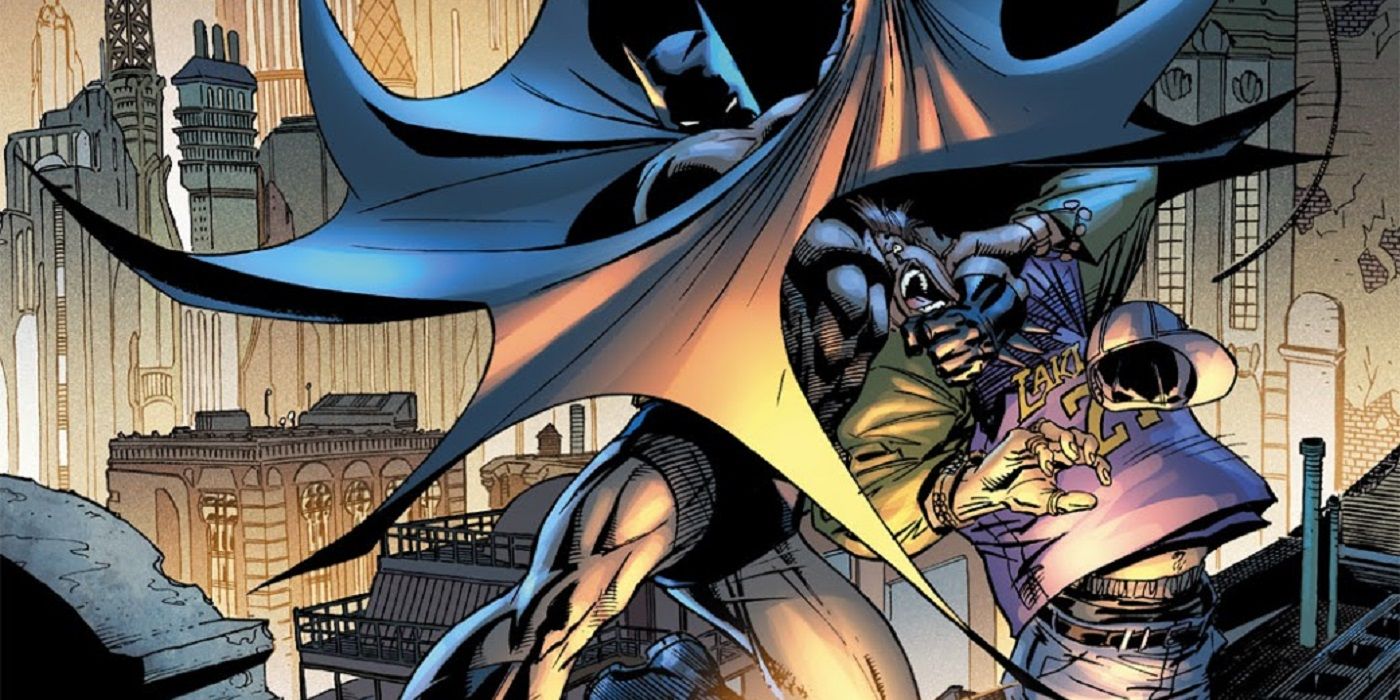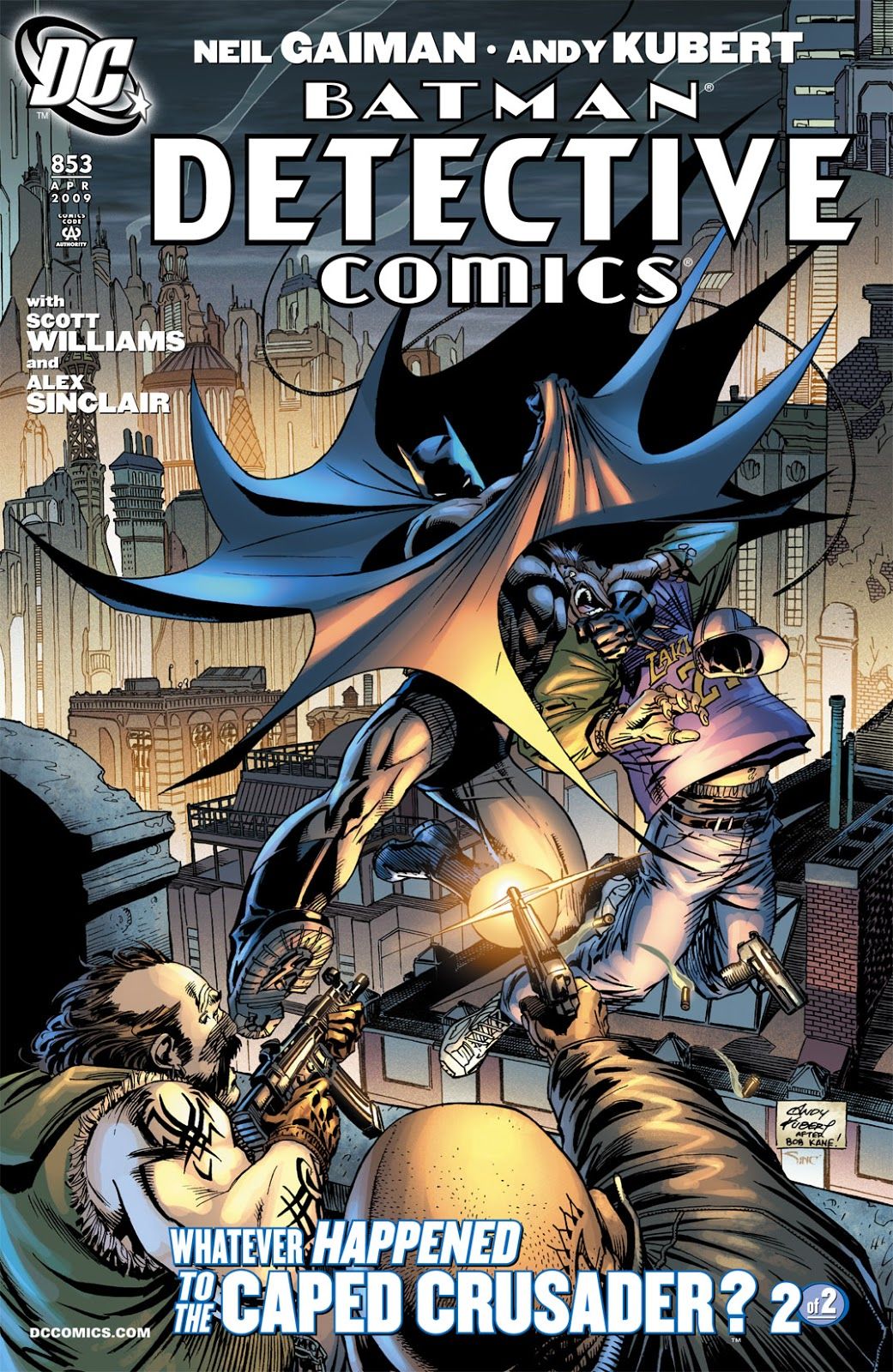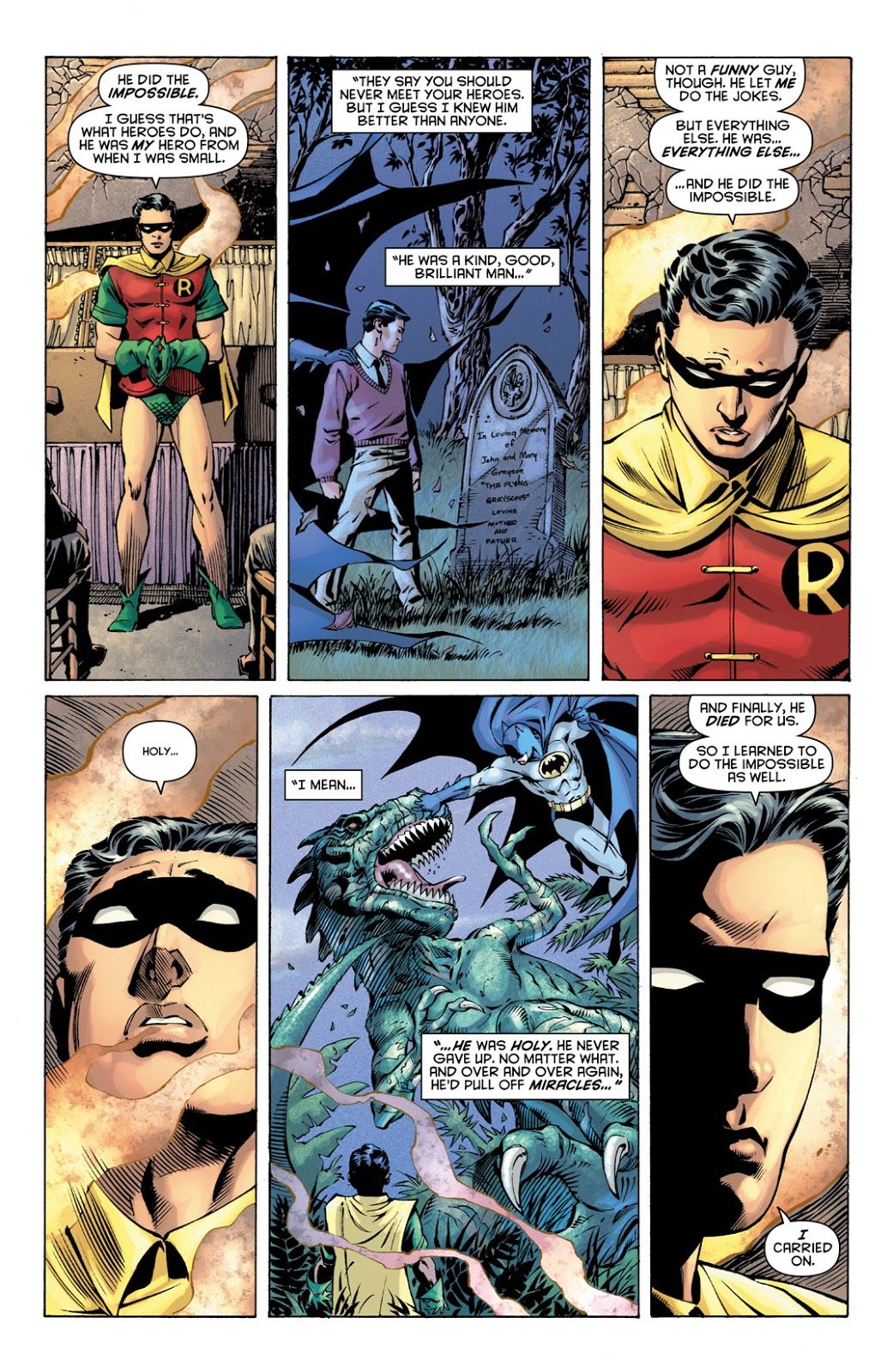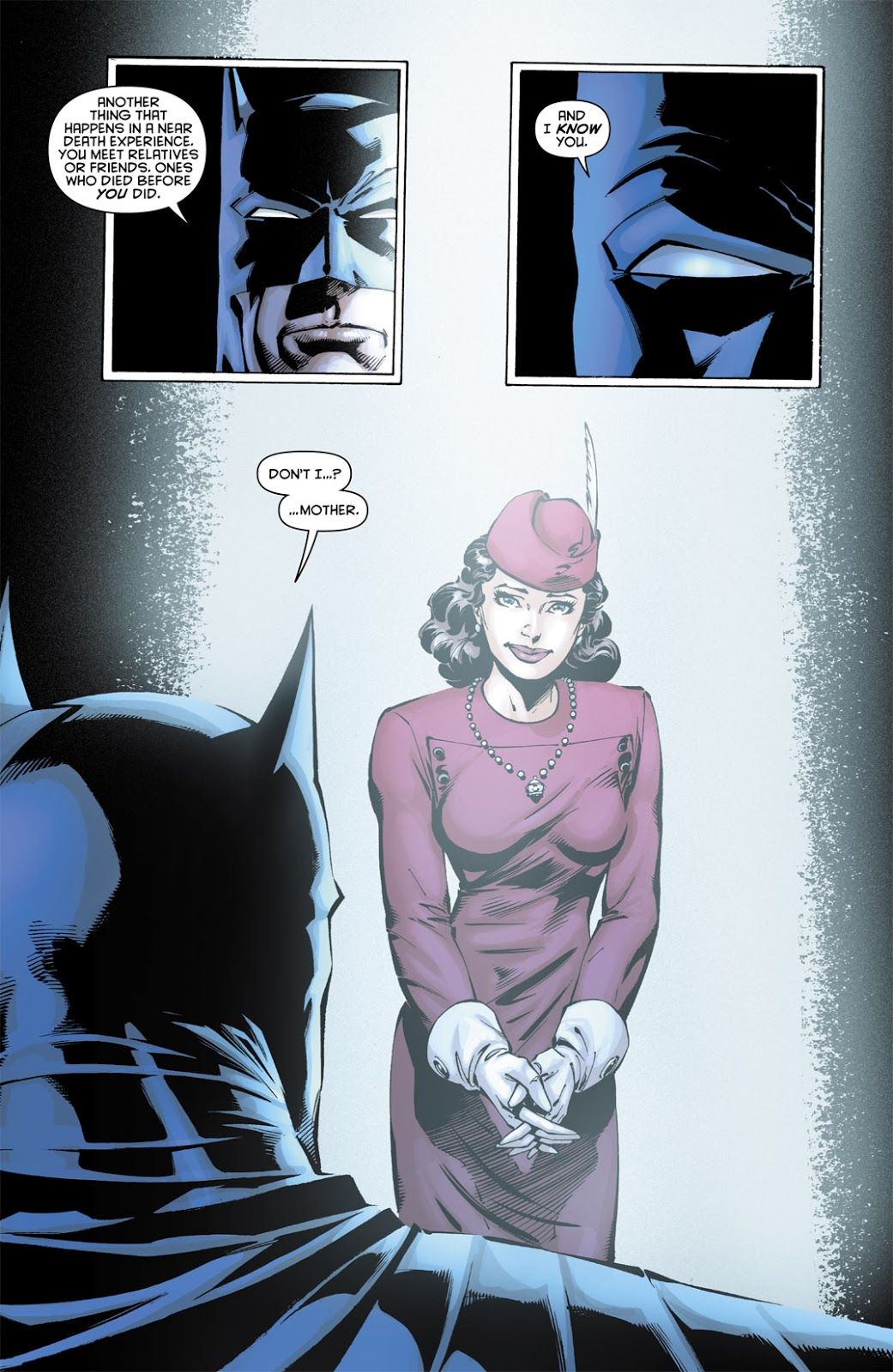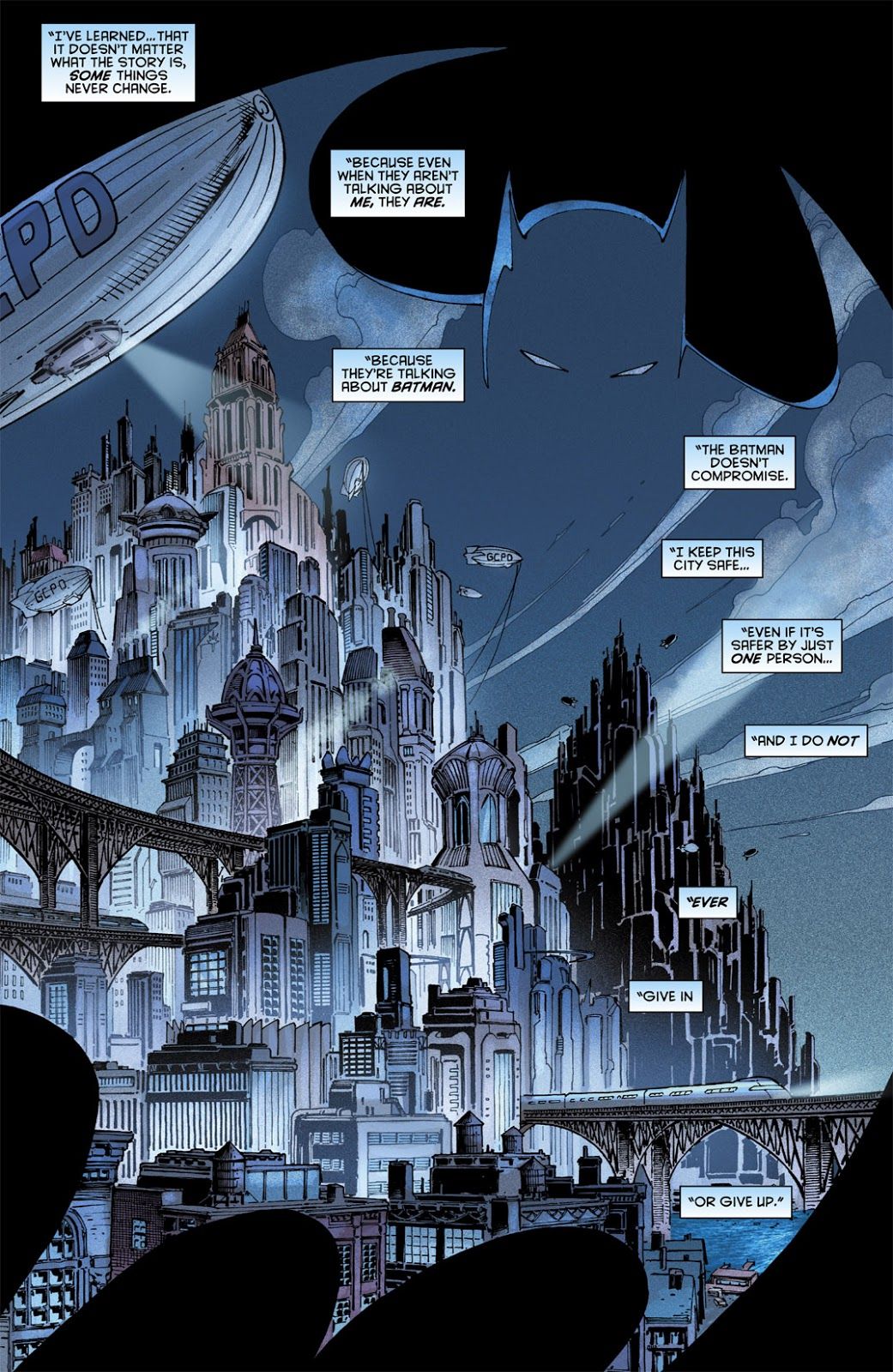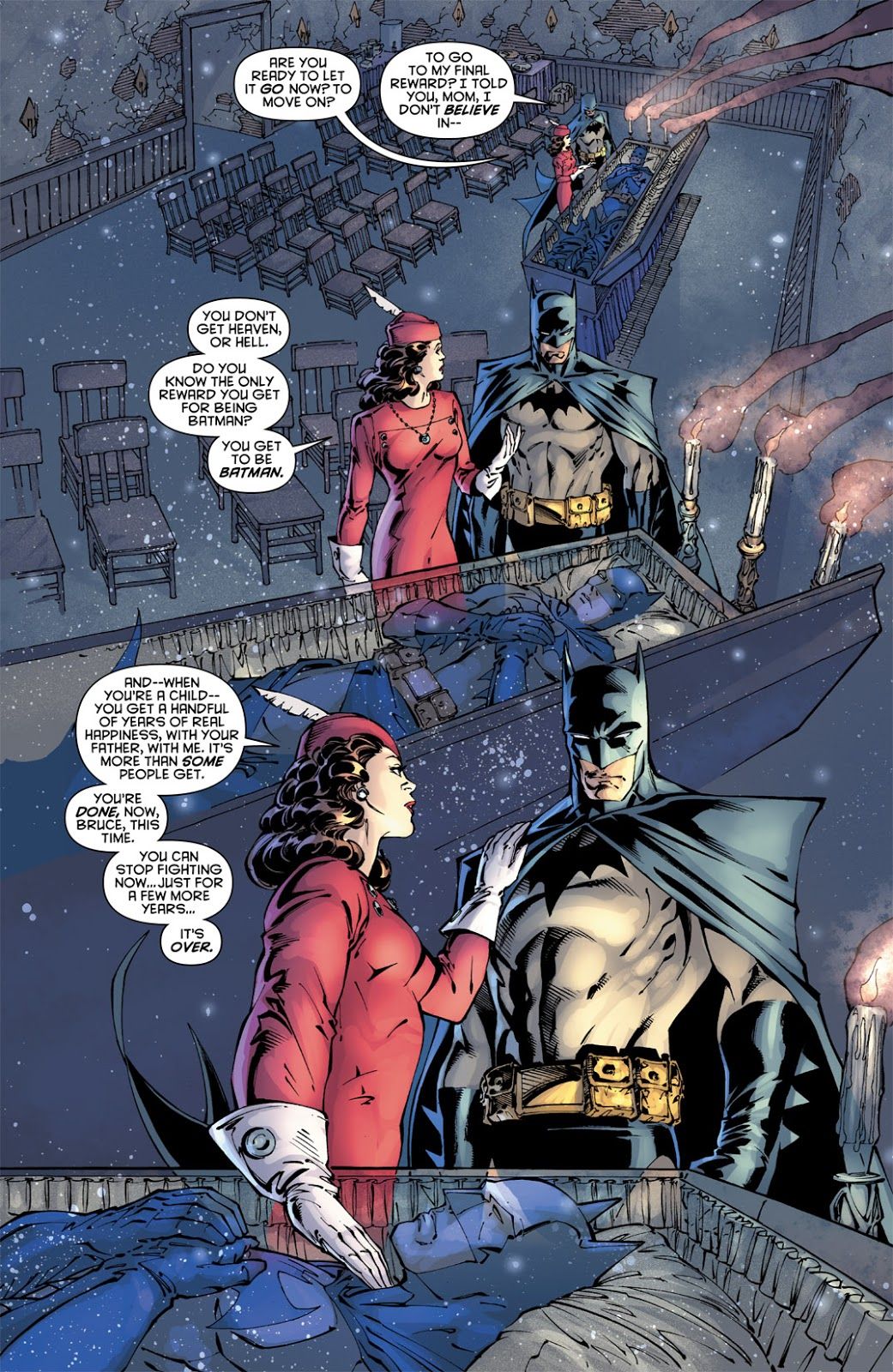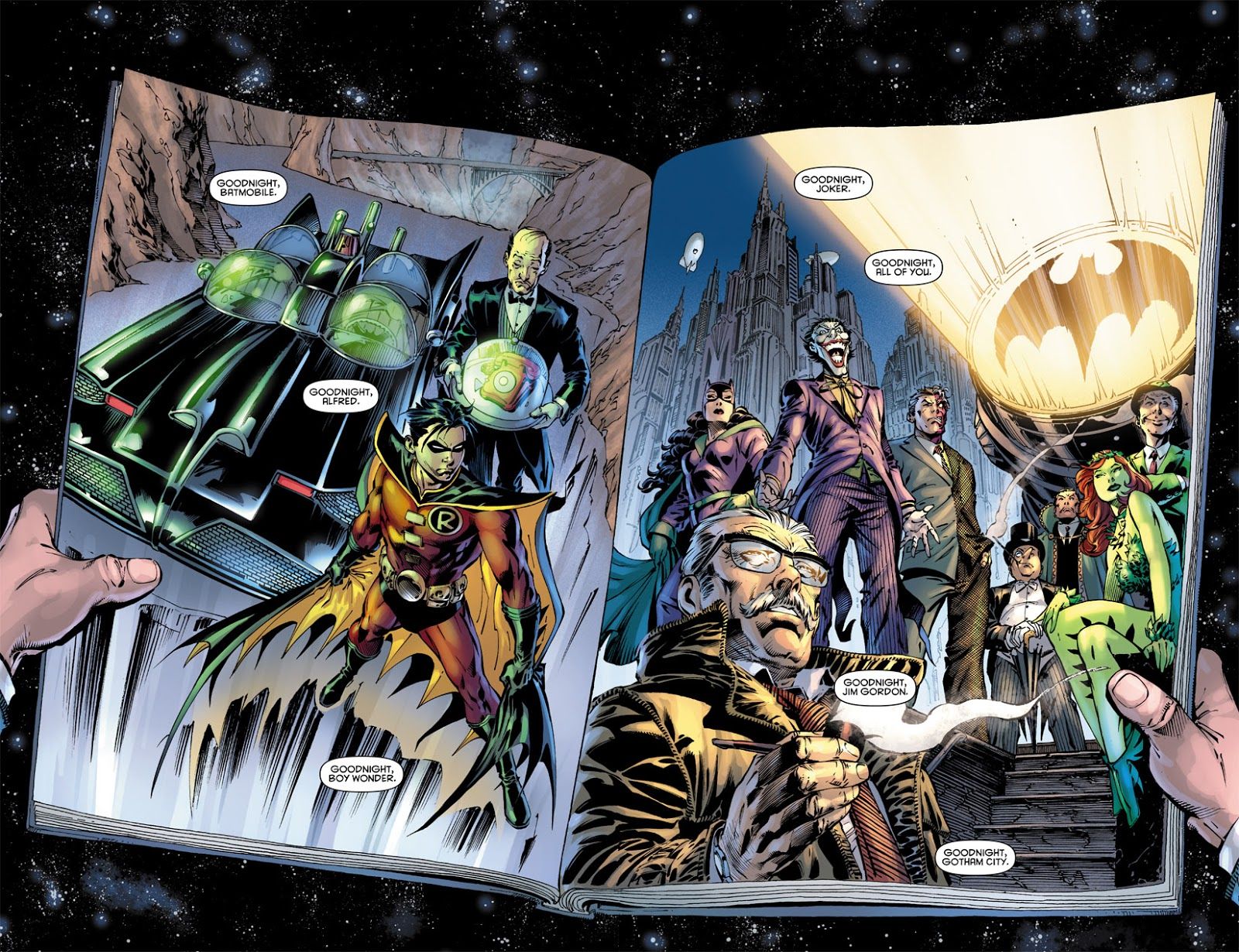This is "Look Back," a brand-new feature that I plan to do for at least all of 2019 and possibly beyond that (and possibly forget about in a week, who knows?). The concept is that every week (I'll probably be skipping the four fifth weeks in the year, but maybe not) of a month, I will spotlight a single issue of a comic book that came out in the past and talk about that issue in terms of a larger scale (like the series overall, etc.). Each week will be a look at a comic book from a different year that came out the same month X amount of years ago. The first week of the month looks at a book that came out this month ten years ago. The second week looks at a book that came out this month 25 years ago. The third week looks at a book that came out this month 50 years ago. The fourth week looks at a book that came out this month 75 years ago.
Today, we look at the conclusion of "Whatever Happened to the Caped Crusader," the two-part "goodbye" to Batman by Neil Gaiman and Andy Kubert (with inks by Scott Williams). The storyline began in February 2009's Batman #686 and now concludes in April 2009's Detective Comic #853, which has a Kubert/Williams' cover that homages Bob Kane's cover for Detective Comics #27, Batman's first appearance.
Twenty-three years earlier, Alan Moore (and Curt Swan, Kurt Schaffenberger and George Perez) did a story arc called "Whatever Happened to the Man of Tomorrow?" that ostensibly wrapped up the Pre-Crisis continuity of Superman before the whole thing was rebooted by John Byrne in Man of Steel. Here, there was no accompanying reboot, but Grant Morrison HAD just finished the epic storyline, "R.I.P" that had left Batman missing and then that tied in with Final Crisis, where Batman was seemingly killed in battle with Darkseid. So the main thing was that it appeared as if Batman was dead and so DC took the opportunity to let one the greatest modern comic book writers, Neil Gaiman, tell his version of the "last" Batman story and, of course, Gaiman made sure to do a story that explained that there could never be a "last" Batman story (which nicely dovetailed in with Morrison's own run, where he was about to take his stories to a new title, Batman and Robin, starring Dick Grayson as the new Batman, with the heavy stress on the phrase "Batman and Robin will never die!").
As noted, the story began in Batman #686, which was a bit of an homage to David K. Reed and John Calnan's classic 1977 story arc, "Where Were You on the Night Batman Was Killed?," where various Batman villains tell the story of how they killed Batman. Here, instead, different members of Batman's extended supporting cast show up for his wake and explain how he died. The first issue had two detailed stories by Catwoman and Alfred (Catwoman's version is a riff on the death of Robin Hood while Alfred claims that he invented Batman's Rogues Gallery as a way to give Bruce some meaning in his life, before it ended with even more tragedy).
As this issue begins, the stories are briefer, but they continue the beautifully clever homages to various periods of Batman's career (with Kubert, in turn, trying to draw different versions of Batman, as drawn by various classic Batman artists).
One of the particularly clever bits is Gaiman's homage to the Batman from the 1966-68 Batman TV series, which is simply described as the "holy" Batman...
Throughout the story, Batman had been speaking to an unknown person, but as Batman comes to terms with the fact that this all a near death experience, he realizes that he is speaking to none other than his own mother, Martha Wayne...
Page 2: [valnet-url-page page=2 paginated=0 text='Goodbye Batman!']
Martha asks Batman if there are any lessons he learned from all of the stories and he realizes that there is - the one consistent aspect of them all is that he never gives up.
And after an awesome homage of classic Batman moments by Kubert and Williams that reiterate that "never give up" nature, Martha explains to him that he never gets to actually go to Heaven or Hell, as his reward for all of his good is to just continue as Batman, but as this is more than a near death experience, he gets to have a little break here and there while he is reborn...
In a clever metafictional sort of approach, Martha then evokes the classic children's book, "Goodnight, Moon," by having Batman say "goodbye" to all the aspects of his history...
We then see Bruce reborn as a baby to keep the whole cycle going again.
It's a wonderfully touching tribute to Batman's history and the very IDEA behind Batman that paired extremely well with what Grant Morrison was doing with the character at the time.
If you have any suggestions for April (or any other later months) 2009, 1994, 1969 and 1944 comic books for me to spotlight, drop me a line at brianc@cbr.com! Here is the guide, though, for the cover dates of books so that you can make suggestions for books that actually came out in the correct month. For the 75 and 50 year old comics, the cover date is three months ahead of the actual release date (so July for a book that came out in April) while the 25 and 10 year old comics have a cover date that is two months ahead of the actual release date (so June for a book that came out in April). Obviously, it is easier to tell when a book from 10 years ago was released, since there was internet coverage of books back then.

